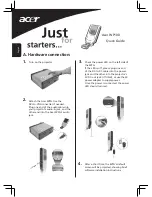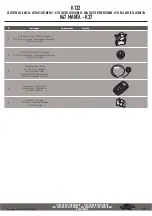
QuercusVL Programming Manual
○
Truck2: truck, model 2.
●
Vehicle identifier (integer value).
●
Position of the vehicle, in millimetres. It refers to the vertical axis of the image,
ignoring the position in the horizontal axis (as vehicles always drive on the centre of the
right lane).
7.2.1.2. Example
Example of two vehicles movement. The first vehicle drives from the bottom to the top of the
image. When bypassing the half, it increases its speed. Then the second car starts its
movement from the top to the bottom.
#1000ms after the startup, vehicle 1 (type Car2) is created on position 0.
1000,Car2,1,0
#4000ms later vehicle 1 must be on position 12500.
4000,Car2,1,12500
#1000ms later vehicle 1 must be on position 35000 (out of the image).
1000,Car2,1,35000
#0ms later vehicle 2 (type Van1) is created on position 35000 (out of the image).
0,Van1,2,35000
#2000ms later vehicle 2 must be on position -10000 (out of the image).
2000,Van1,2,-10000
7.2.2. Digital input event
The simulator can monitor the state of the four digital inputs of a unit. These digital inputs
have the same identifier as in a real unit (0,1) and the same state (0 inactive, 1 active).
The state will be always defined by the last executed instruction; by default is inactive.
7.2.2.1. Instruction structure
●
Milliseconds the simulator has to wait from the previous instruction until the execution
of the next one.
●
Event type.
○
I: digital input.
●
Digital input identifier. Possible values: 0,1
●
Digital input state.
○
0: inactive.
○
1: active.
7.2.2.2. Example
Example of activation/deactivation of digital inputs. At the beginning, both 1 and 2 inputs are
activated. The first remains active for 5 seconds and the second only 3. After 5 seconds (when
Quercus Technologies
210
















































